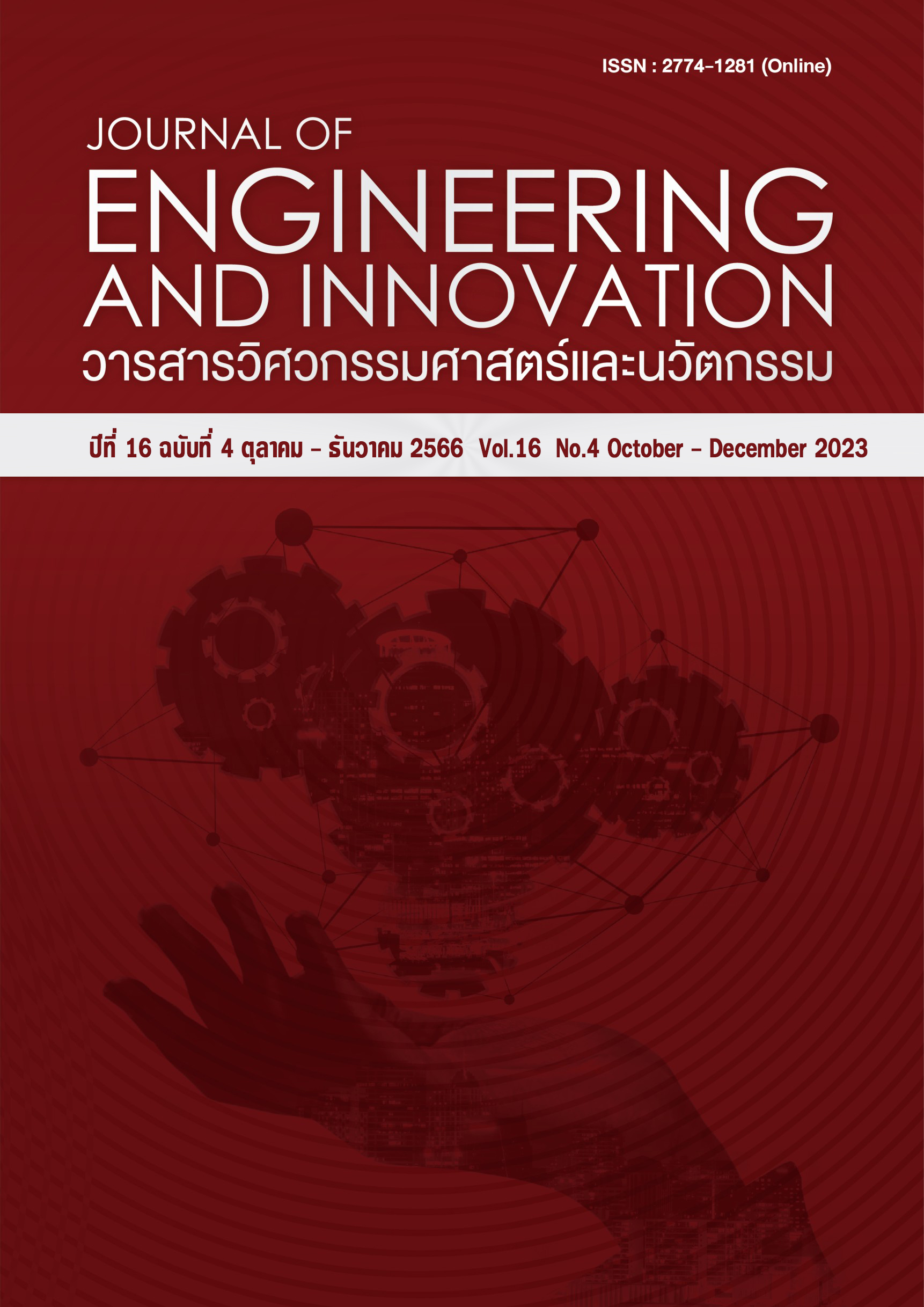Drinking Water Transportation Management Using Mathematical Programming Model: A Case Study of Thap Kaew Drinking Water Plant, Nakhon Ratchasima Rajabhat University
Main Article Content
Abstract
Planning can be regarded as management to increase efficiency, but it was found that the Thap Kaew drinking water plant at Nakhon Ratchasima Rajabhat University does not have a transport schedule, causing problems in transportation for customers who do not follow the appointment. Based on the aforementioned problems, this research aims to manage the transportation of drinking water according to the customer's appointment and deliver drinking water within a limited time. This problem was solved by using mathematical models and the allocation of tasks by smooth production, with the purpose of ensuring that the daily tasks are distributed evenly. The solution is divided into two levels: 1) the routing of potable water transport under truck capacity conditions and 2) transportation planning under a production time frame. However, this case study has production capacity constraints as follows: the capacity to produce drinking water at an amount of 150 dozen/day, the total number of 22 customers, and a delivery time of 2 hours/day. The results of this study found that the production quantity and drinking water transportation schedule can be arranged using a total of 3 days, consisting of: on Day 1, delivery for 142 dozen of drinking water to 5 customers took 1 hour, 47 minutes, and 41 seconds. On Day 2, water delivery takes 1 hour, 47 minutes, and 20 seconds for 146 dozen to 8 customers. On Day 3, water delivery for 144 dozen to 9 customers took 1 hour, 39 minutes, and 39 seconds; furthermore, fuel costs can be reduced by 91.5 percent.
Article Details
References
วรุทัย เดชตานนท์ และจิรวัฒน์ โลพันดุง. การเพิ่มผลผลิตในขั้นตอนการบรรจุน้ำดื่ม กรณีศึกษา โรงผลิตน้ำดื่มทับแก้ว มหาวิทยาลัยราชภัฏนครราชสีมา. วารสารวิชาการคณะเทคโนโลยีอุตสาหกรรม มหาวิทยาลัยราชภัฏลำปาง. 2564; 14(2): 62 – 74.
STACHO J. Introduction to operations research. Available from: https://www.cs.toronto.edu/~stacho/public/IEOR4004-notes1.pdf [Accessed 1st September 2022]
Arora S, Puri MC. A variant of time minimizing assignment problem. European Journal of Operational Research. 1998; 110(2): 314-325.
Chang GJ, Ho PH. The β-assignment problems. European Journal of Operational Research. 1998; 104(3): 593-600.
Caron G, Hansen P, Jaumard B. The assignment problem with seniority and job priority constraints. Operations Research. 1999; 47(3): 449-453.
Pisinger D, Ropke S. A general heuristic for vehicle routing problems. Computers & operations research. 2007; 34(8): 2403-2435.
Boonphakdee W, Charnsethikul P. Solving the linear programming model of large-scale transportation and assignment problems using the column generation technique. Thai Journal of Operations Research: TJOR. 2014; 2(1): 10-21.
Rabbani Q, Khan A, Quddoos A. Modified Hungarian method for unbalanced assignment problem with multiple jobs. Applied Mathematics and Computation. 2019; 361: 493-508.
Silva MM, Subramanian A, Ochi LS. An iterated local search heuristic for the split delivery vehicle routing problem. Computers & Operations Research. 2015; 53: 234-249.
Ozbaygin G, Karasan O, Yaman H. New exact solution approaches for the split delivery vehicle routing problem. EURO Journal on Computational Optimization. 2018; 6(1): 85-115.
อกนิษฐ์ สันธินาค และศิรวดี อรัญนารถ การจัดเส้นทางขนส่งสินค้าและรถหลายขนาดด้วยวิธีวิวัฒนาการโดยใช้ผลต่าง: กรณีศึกษาบริษัทขนส่งเครื่องดื่ม. วารสารวิจัยและพัฒนา มจธ. 2562; 42(2): 145-159.
Mahéo A, Urli T, Kilby P. Fleet Size and Mix Split-Delivery Vehicle Routing: A Study of MIP Formulations with CP Integration. EURO Journal on Transportation and Logistics Manuscript. 2016.

